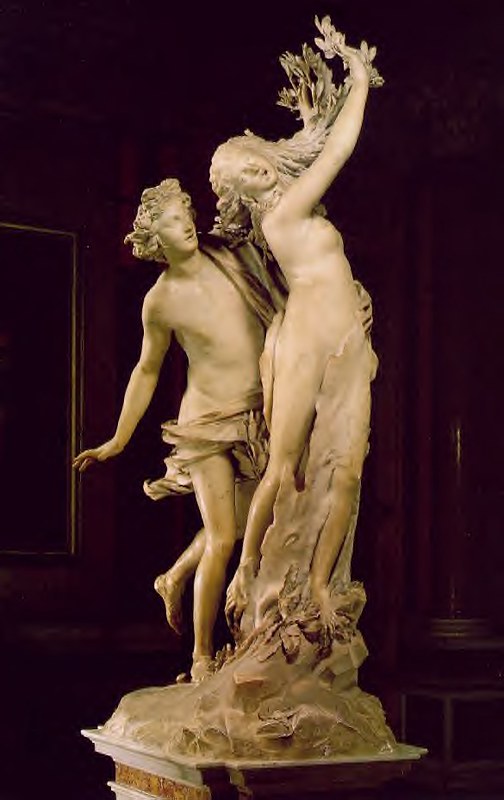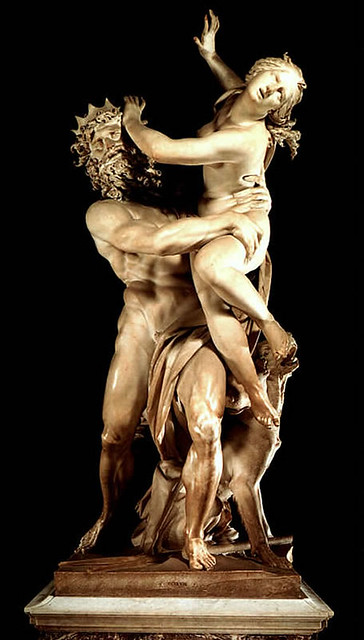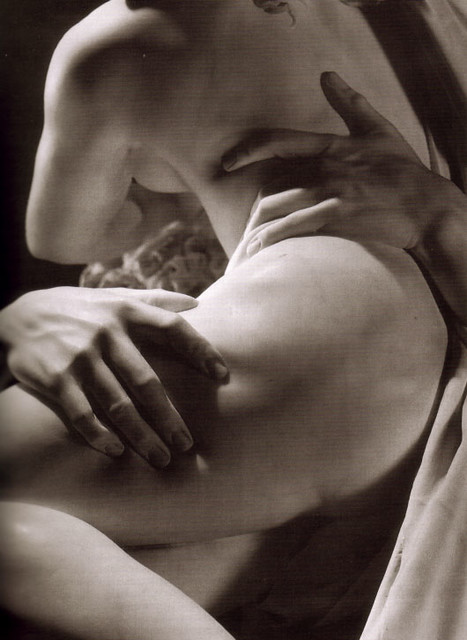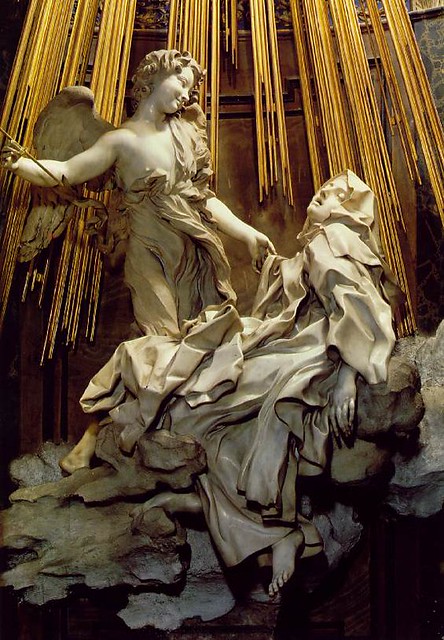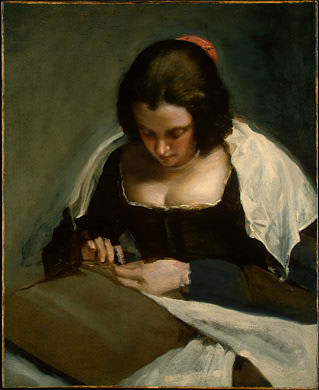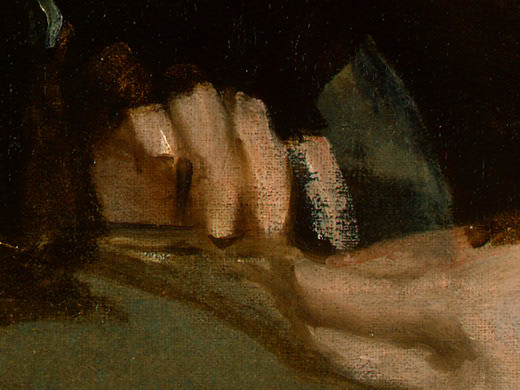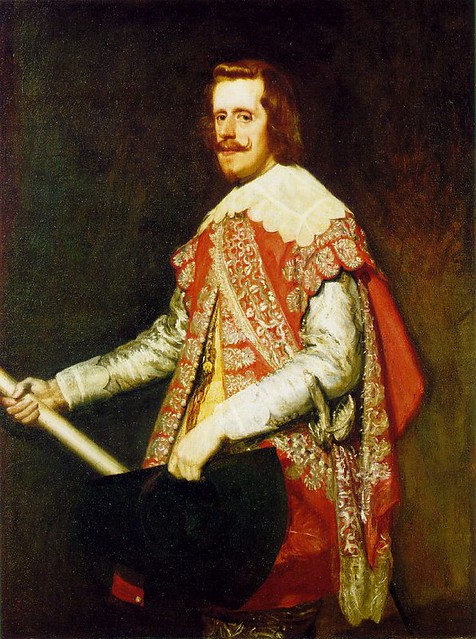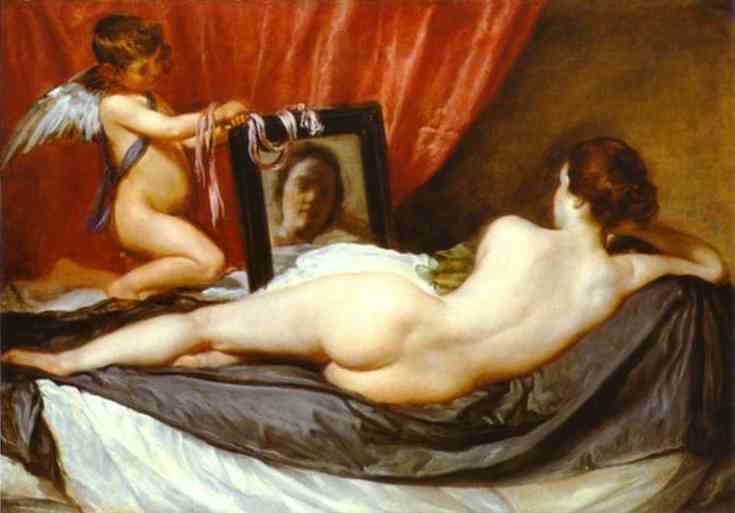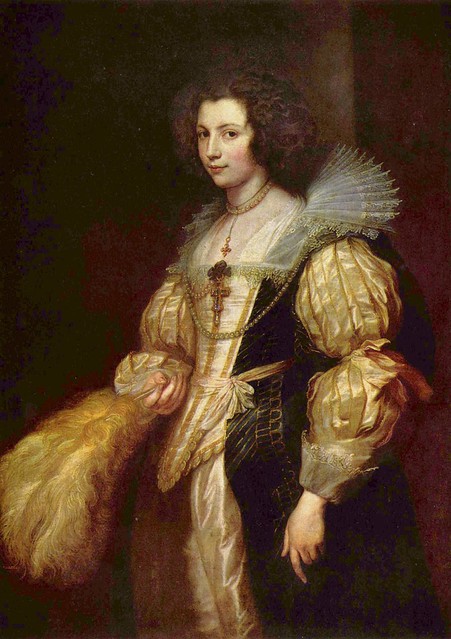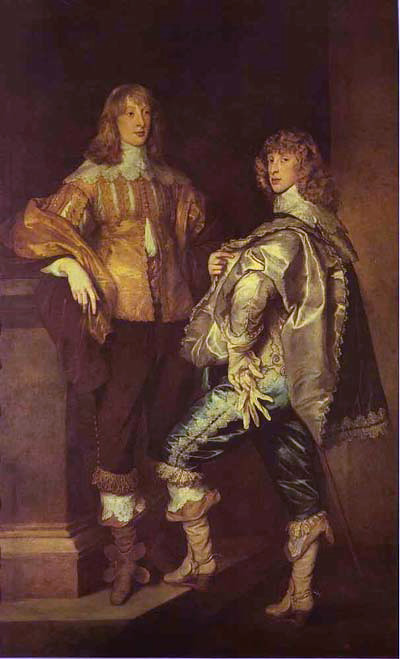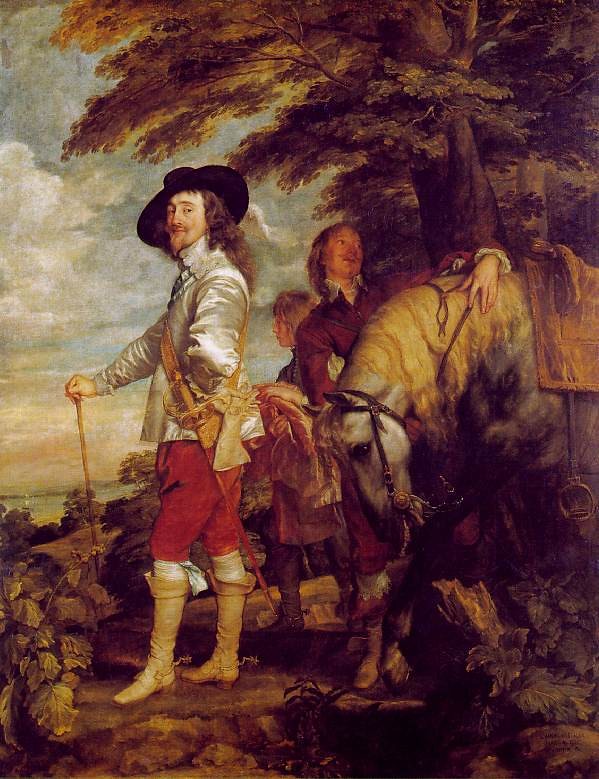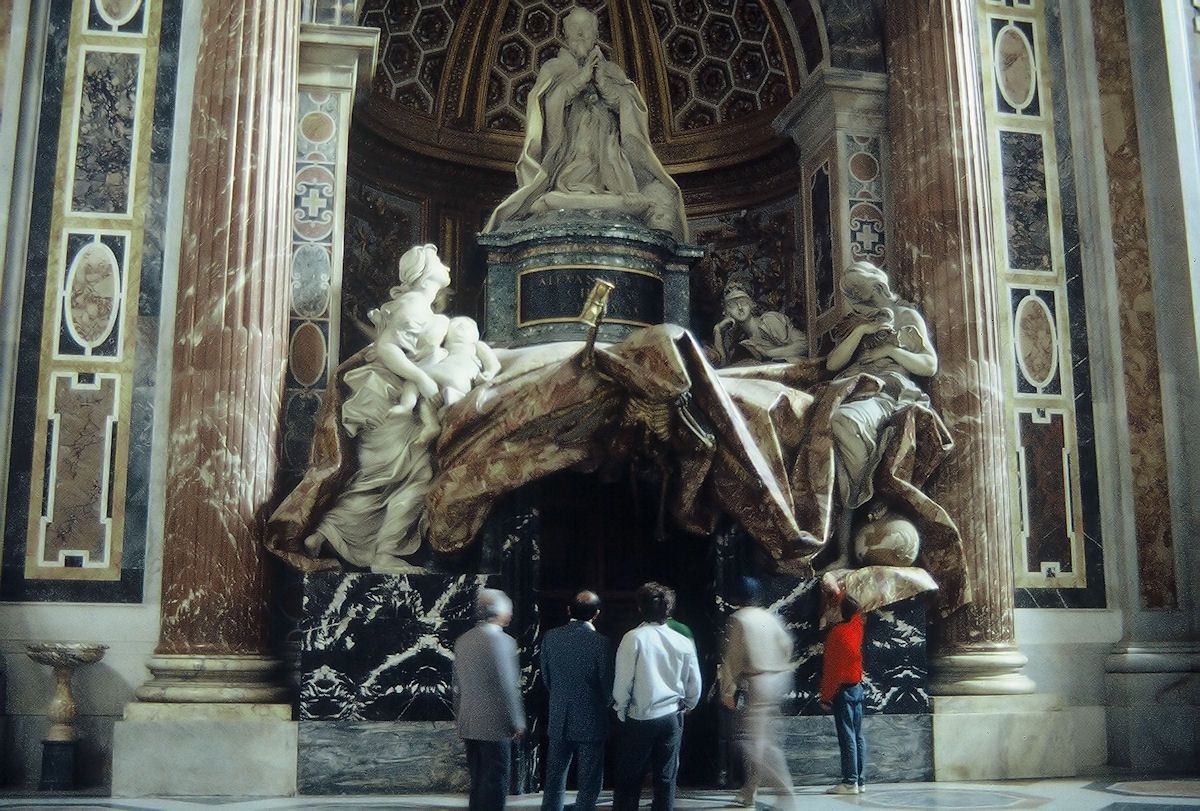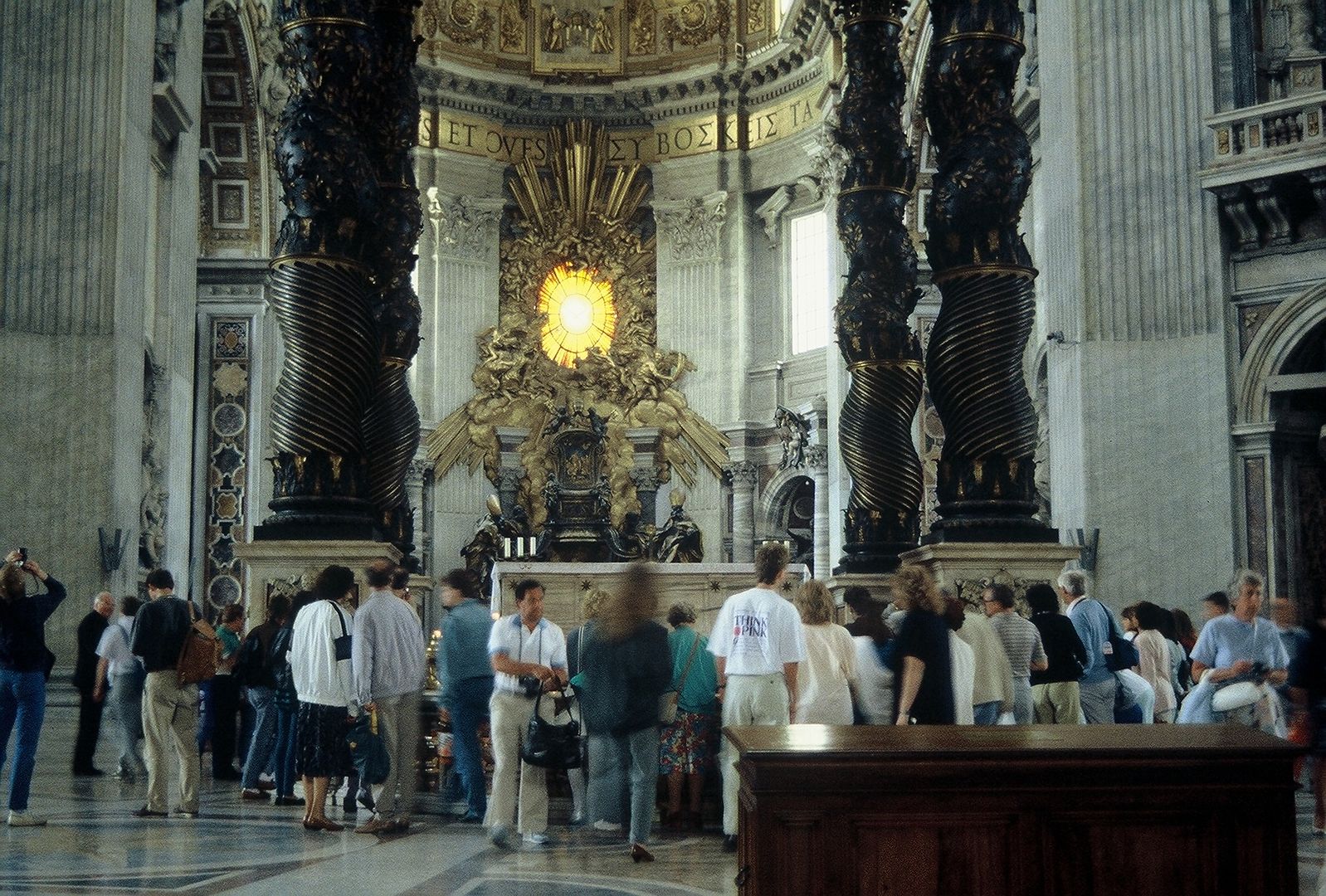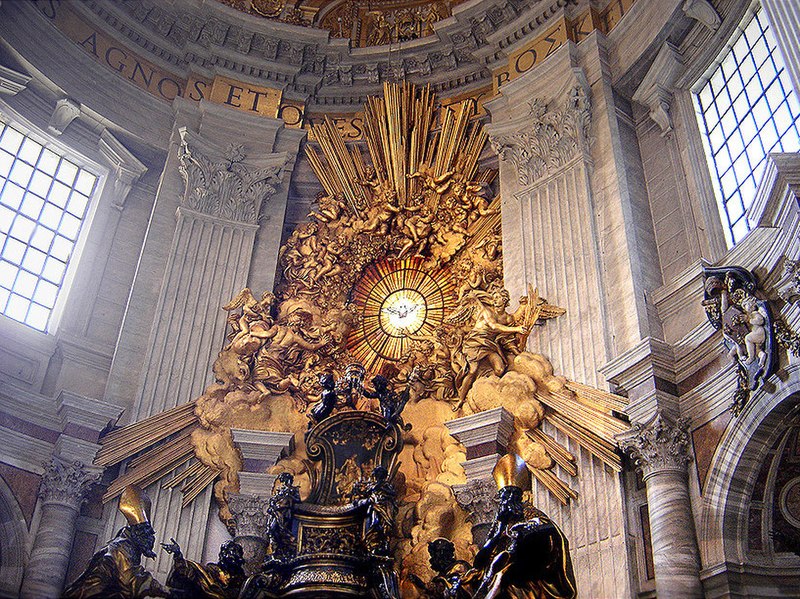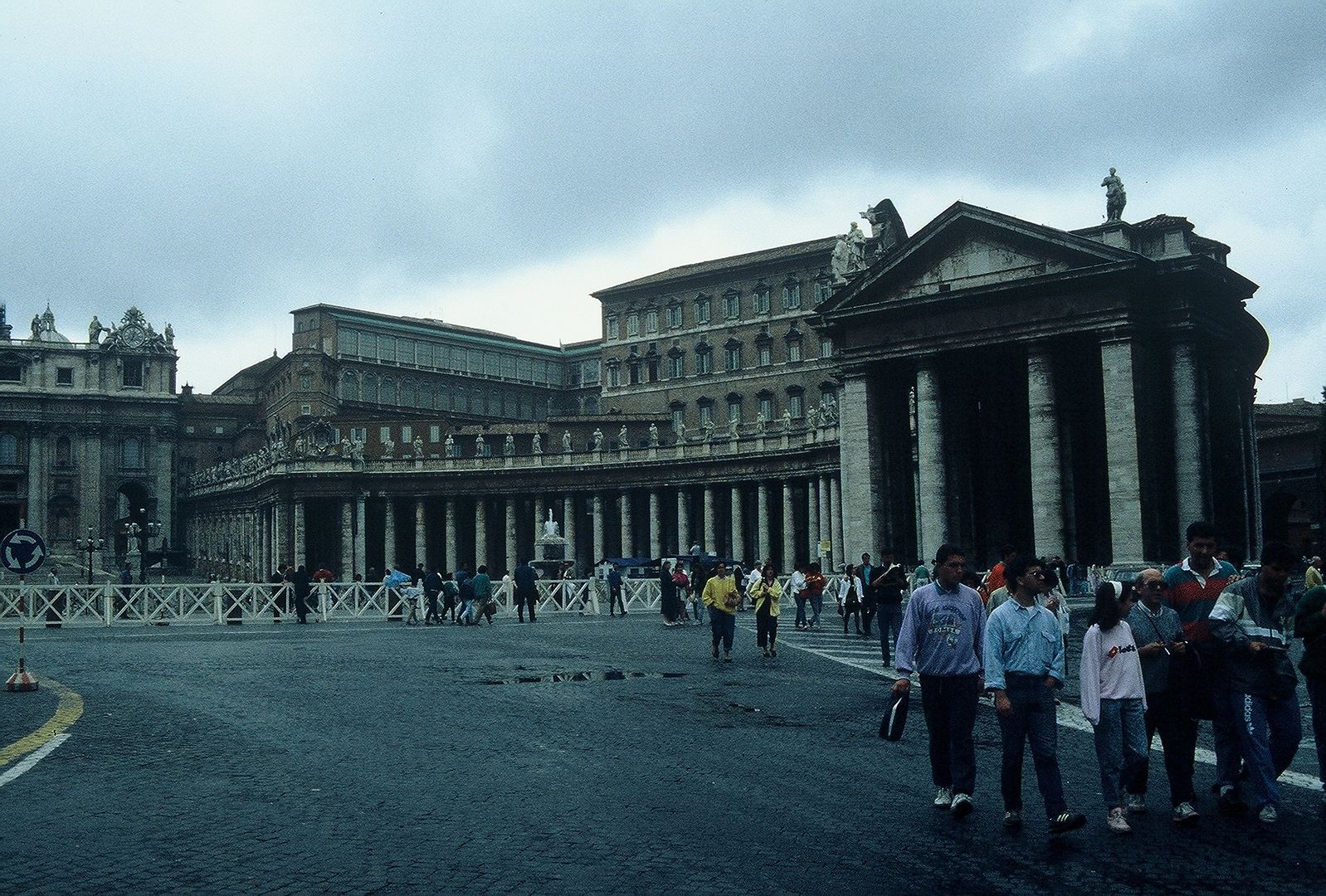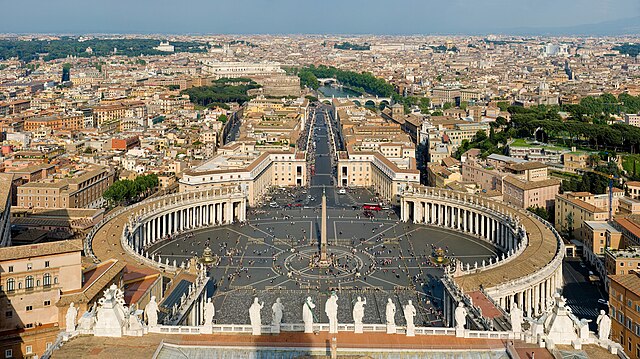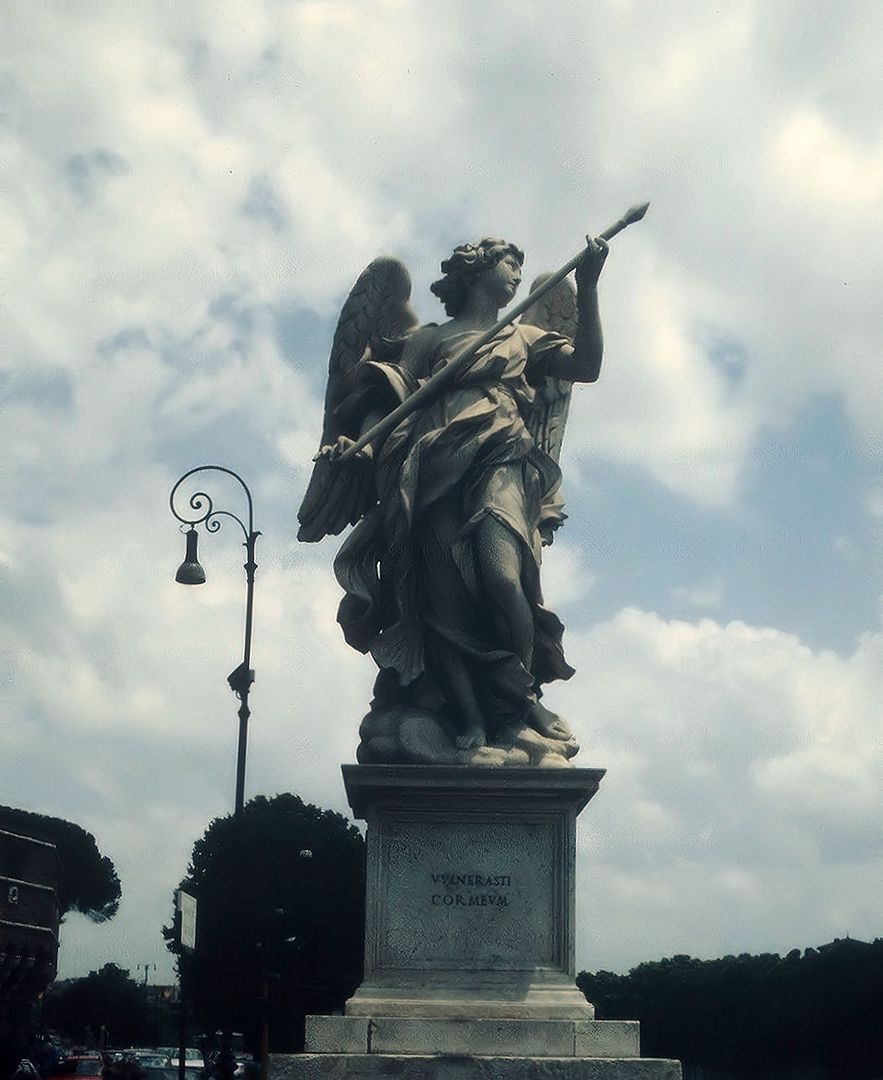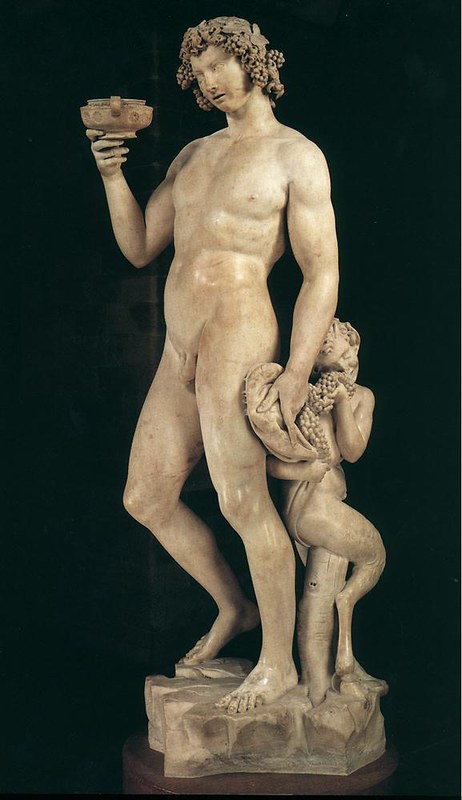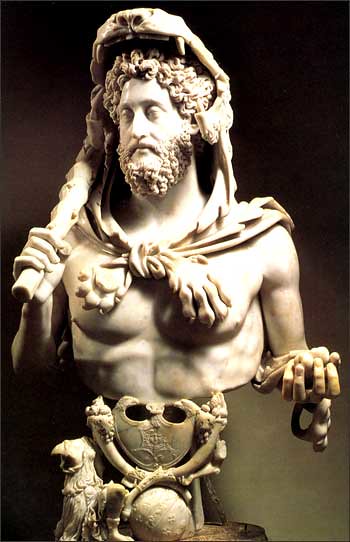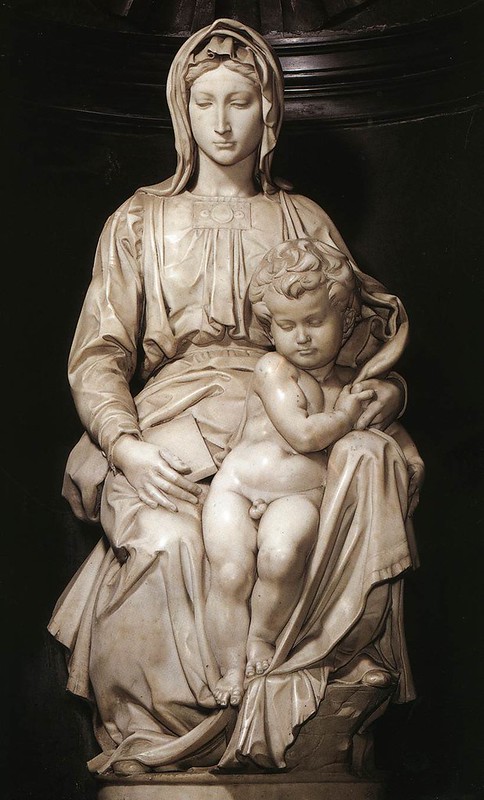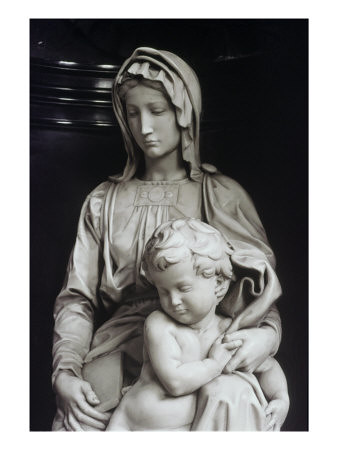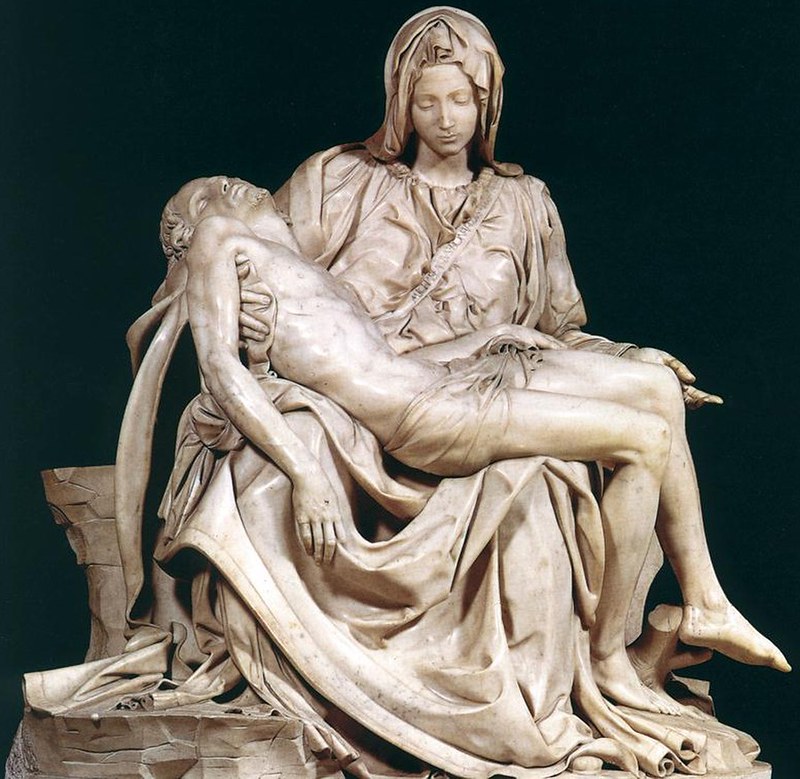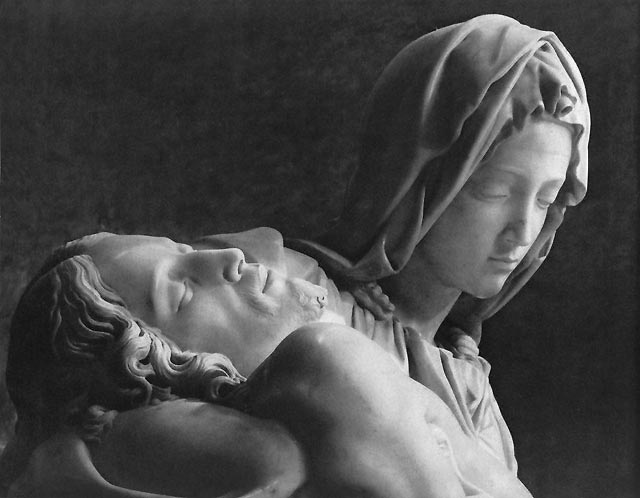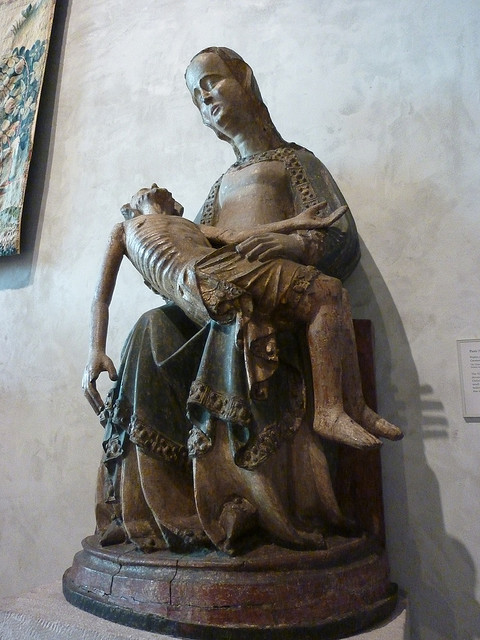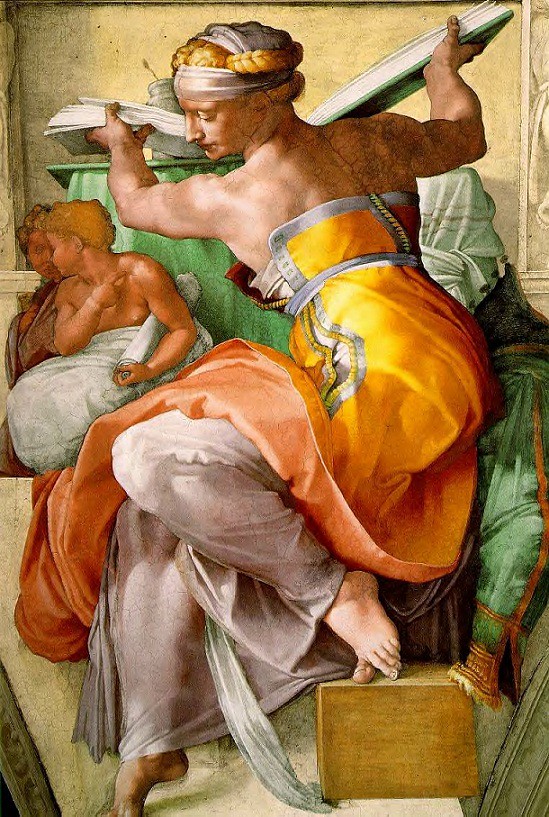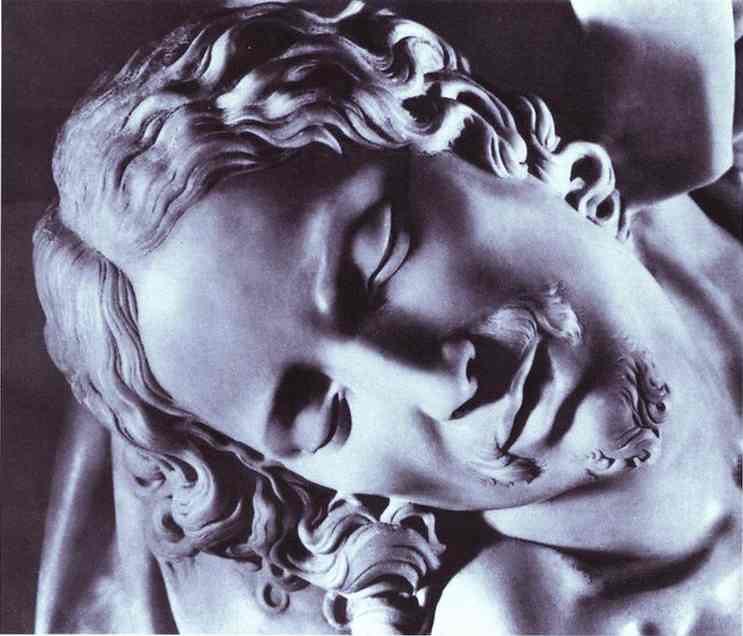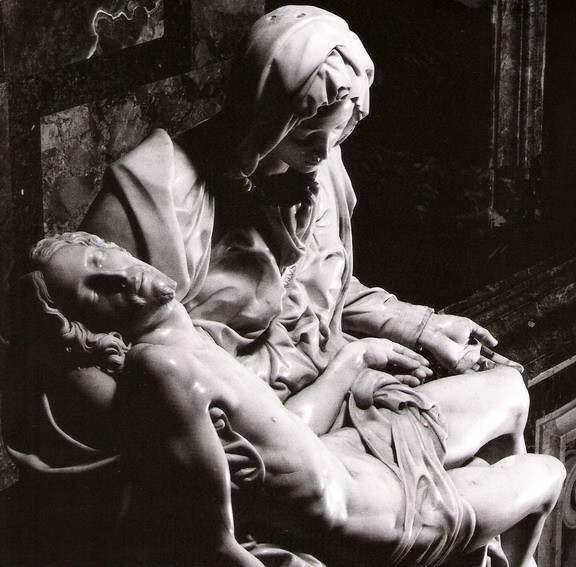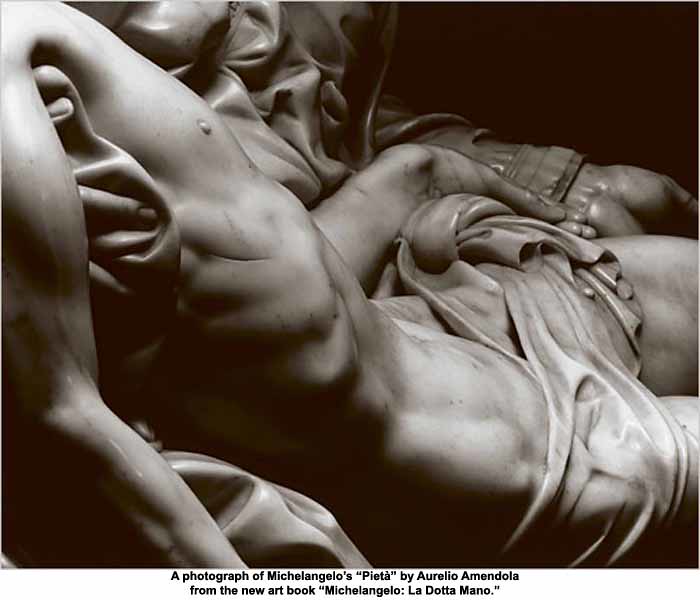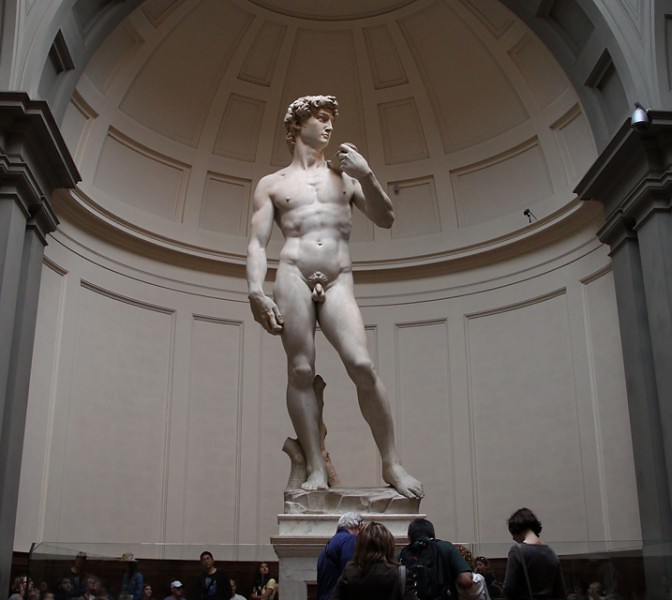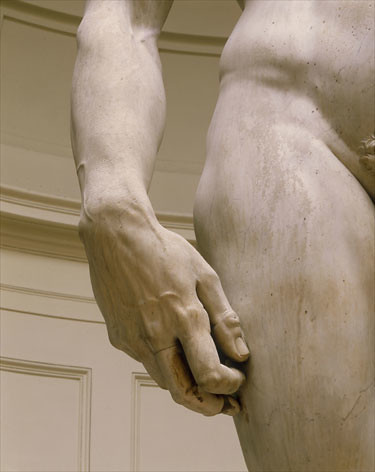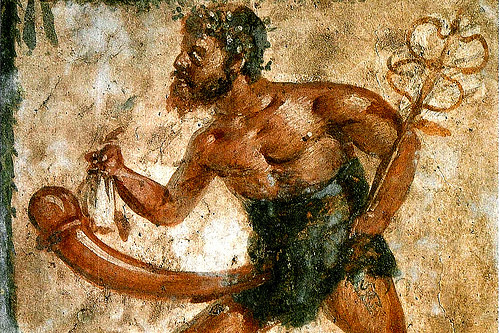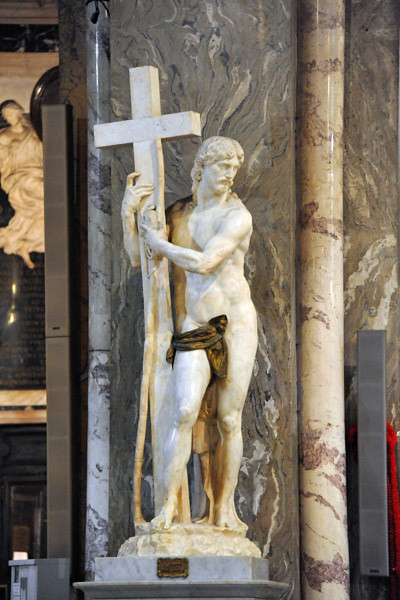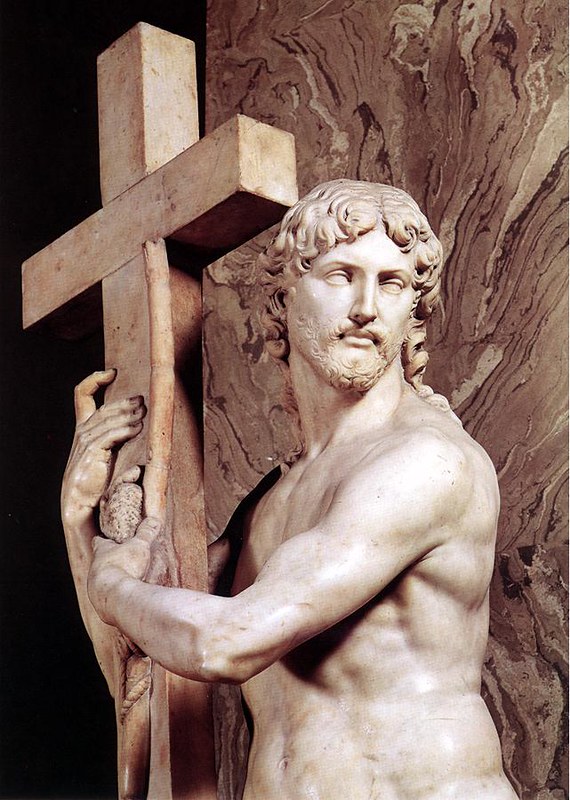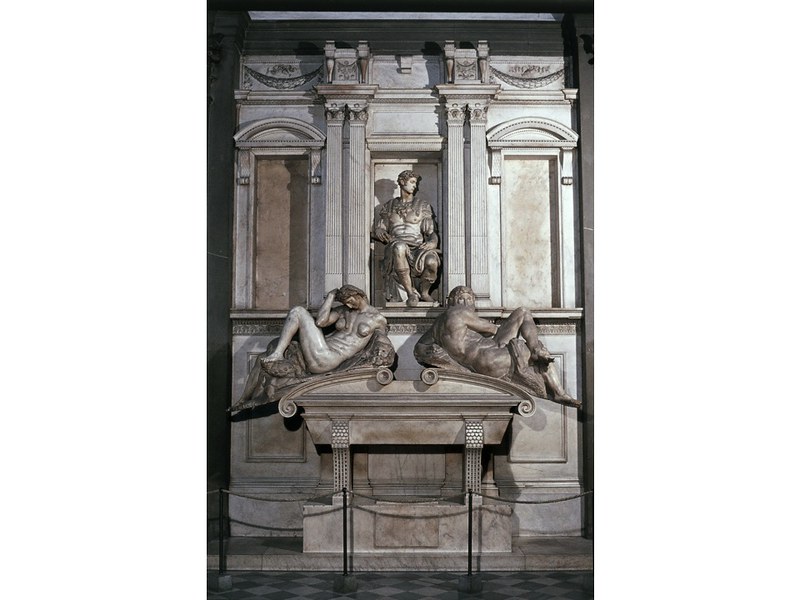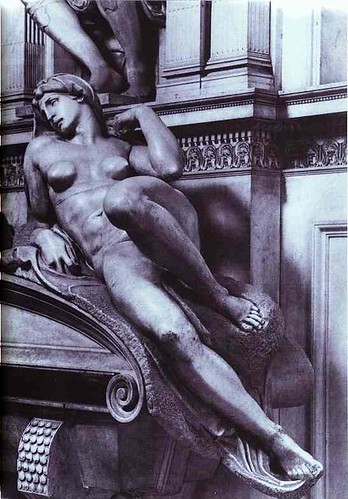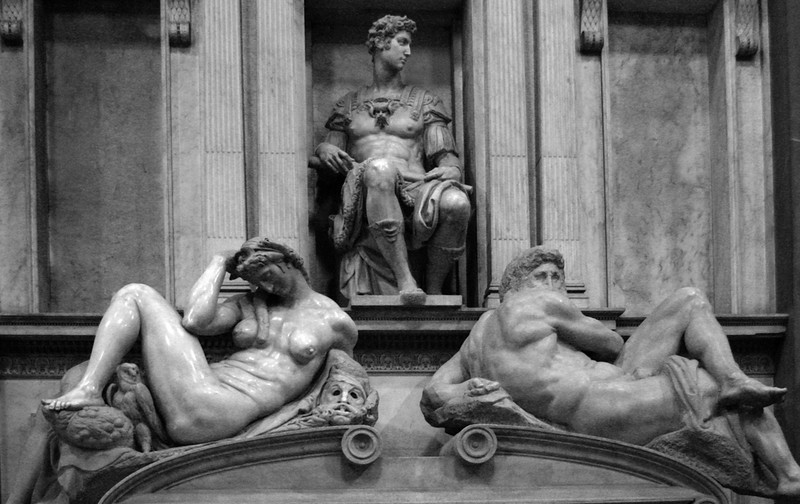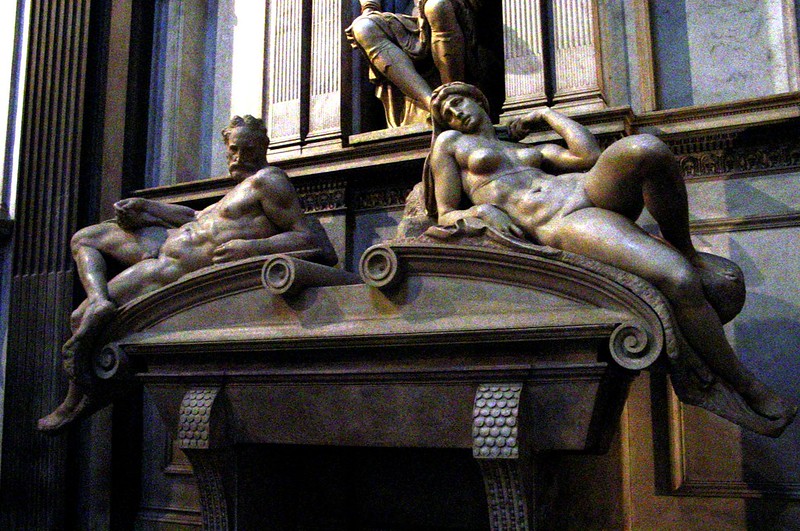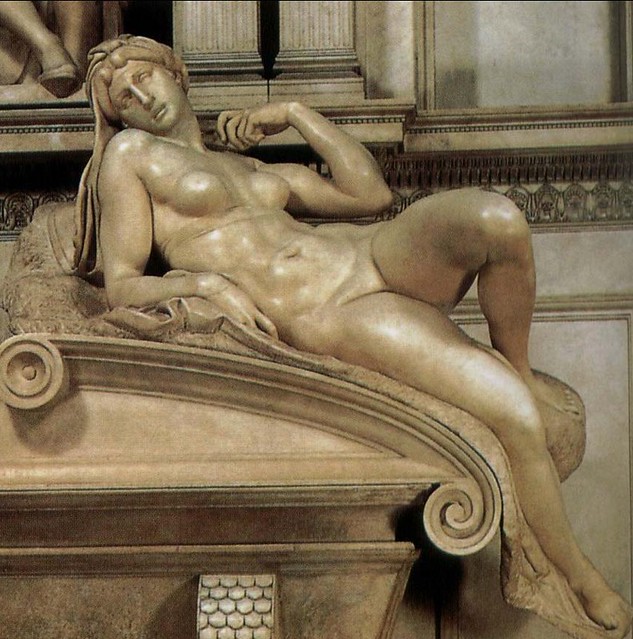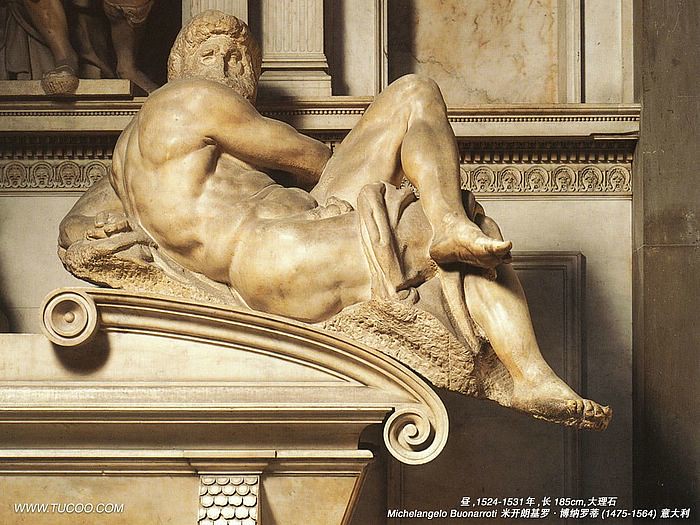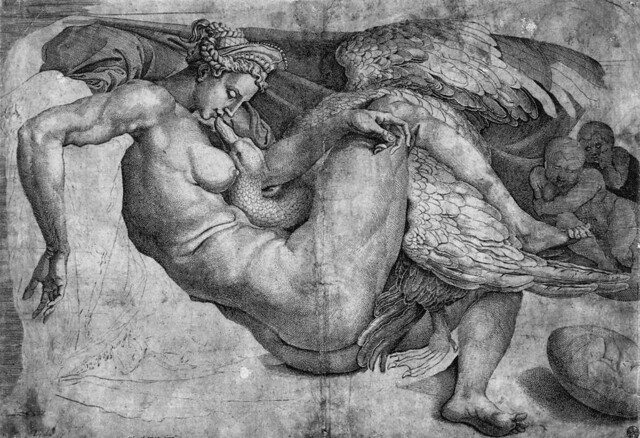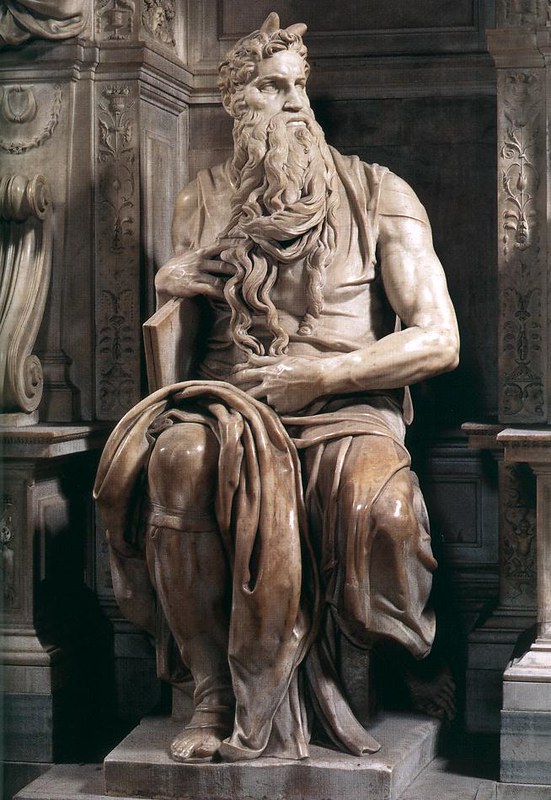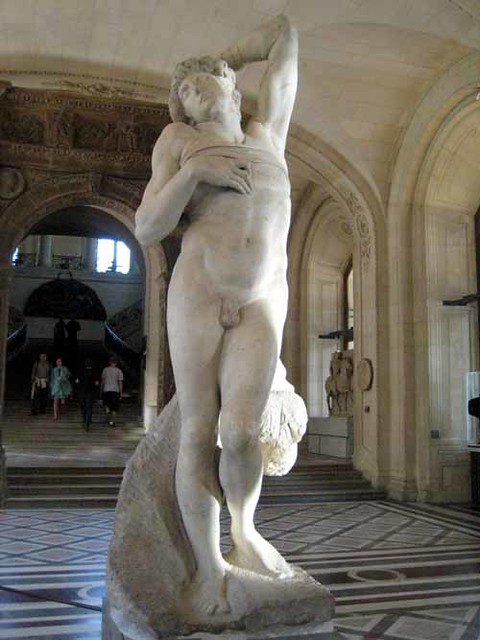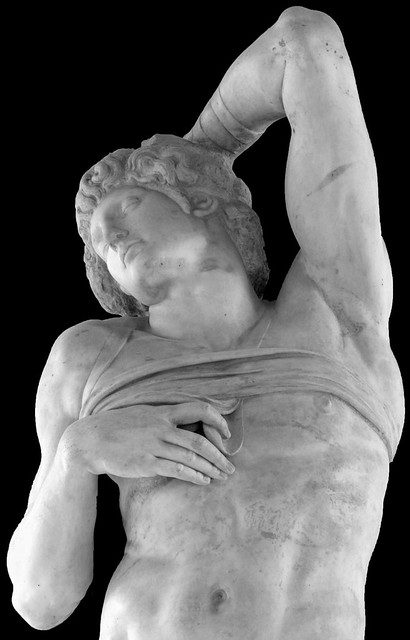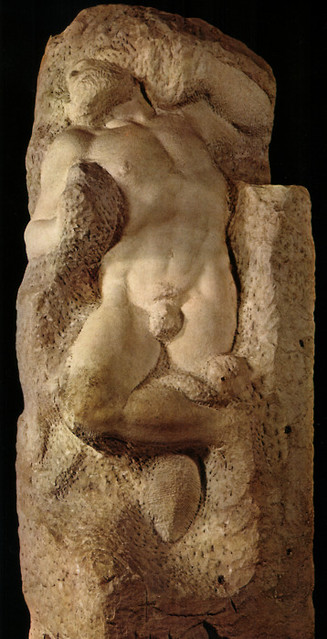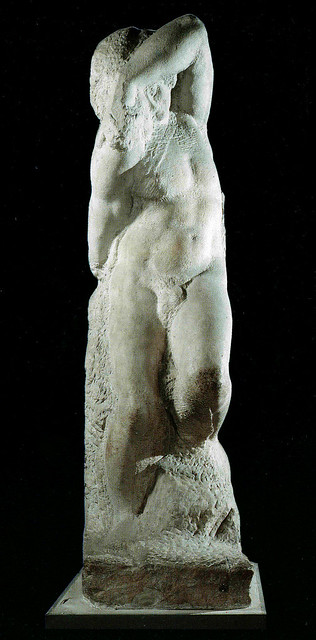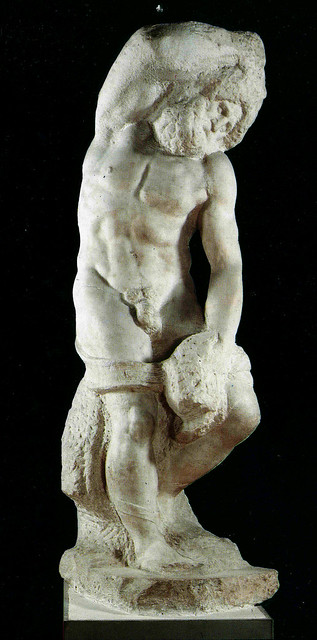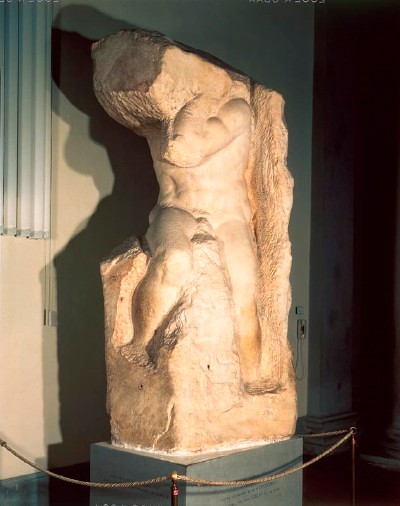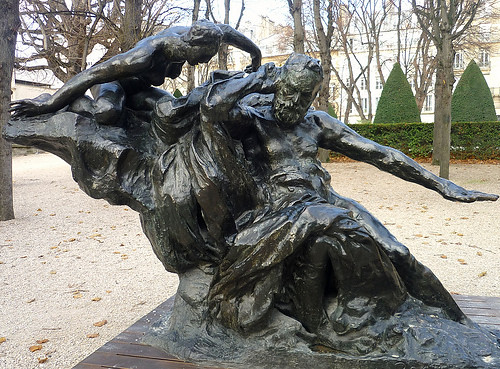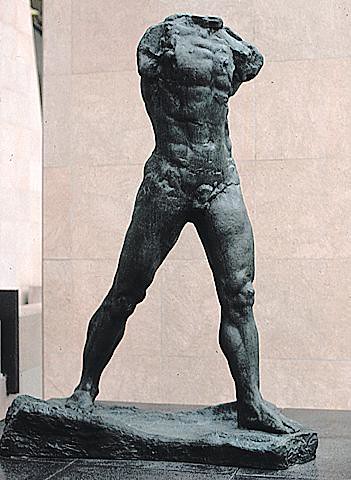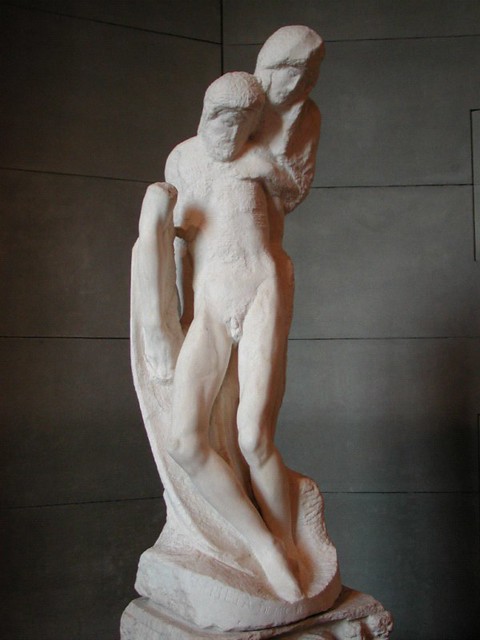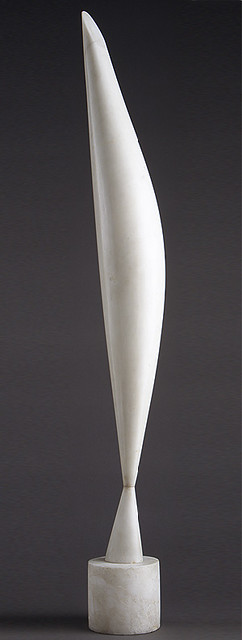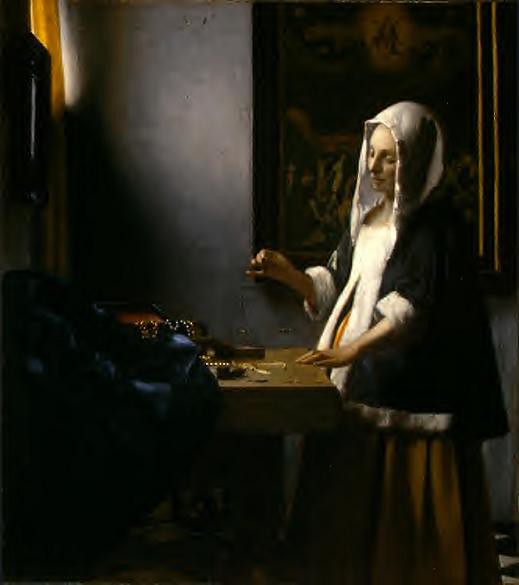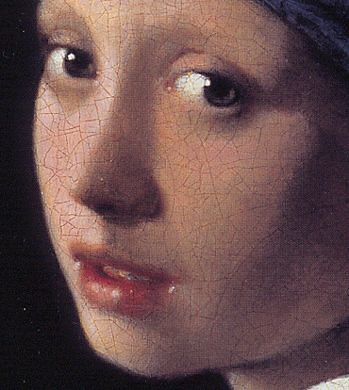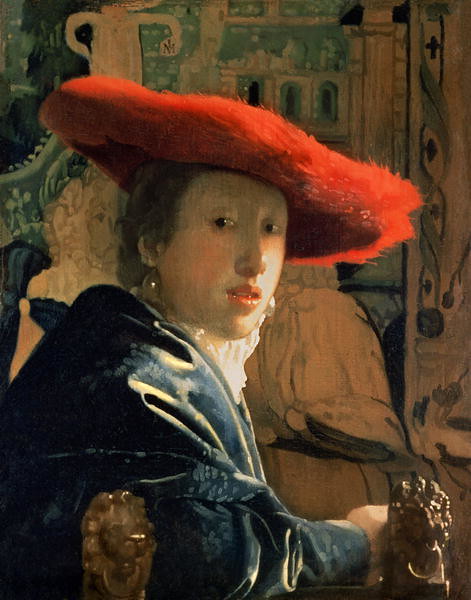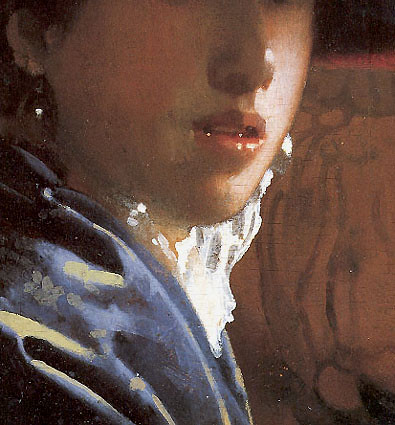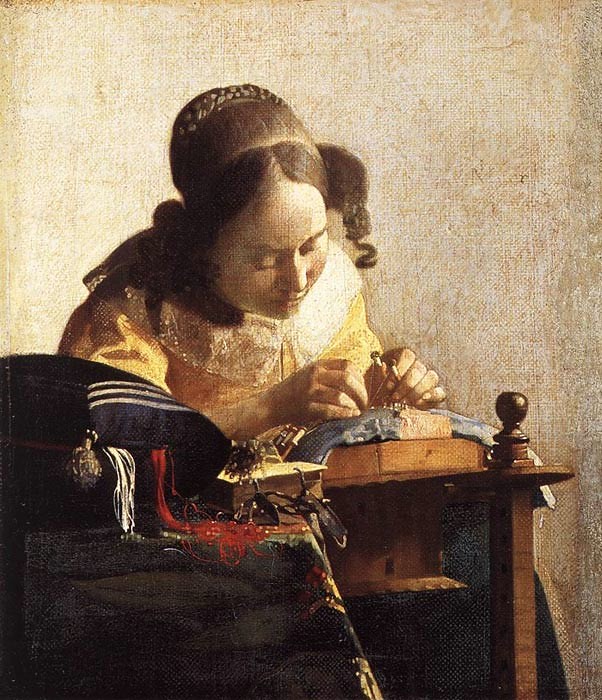I think the Baroque was the period that I first became truly enamored of... for much the same reasons as Mutatis: the absolute mastery of painting... of drawing, perspective, rendering of form and space and shadow and color. Truly there is no period in the whole of Western art that surpasses the Baroque in terms of the absolute technical skills of painters and sculptors in rendering the illusion of real form and space. I was also drawn to the absolute theatricality of the period... the energy, passion, and sheer sensuality. And the compositions? They are so "organic" in nature that one almost fails to recognize just how consciously constructed they are. Among my favorite artists and paintings of the Baroque I would include:
Bernini:
Surely Bernini stands shoulder to shoulder with Michelangelo as a sculptor. What can rival the absolute "miracle" of the Daphne and Apollo as Daphne metamorphoses into a tree... her fingers sprouting the most delicate leaves carved from marble so thin that they are transparent!
Or what of that other masterwork illuminating still another scene from Ovid's Metamorphoses: The Abduction of Persephone? Hard marble virtually breathes with life and warmth as the muscular God's fingers sink into the warm flesh of Persephone:
Or yet again... what of the Ecstasy of St. Theresa... the sculptural group set in an architectural stage:
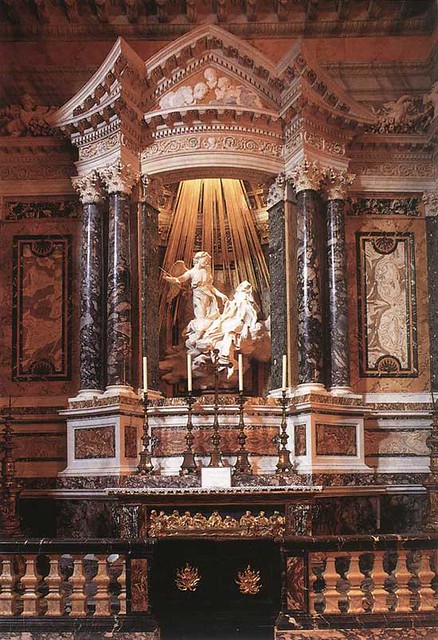
Gilded rays carry light down from a stained-glass window above. Theresa's robe quivers and crackles with electricity. The beautiful angel thrusts his arrow into Theresa again and again... as she writhes in a spiritual/sexual ecstasy... her limbs limp, her head thrown back, eyes rolled, and mouth intoning a moan is a virtual portrayal of an orgasm.
"I saw in his hand a long spear of gold, and at the point there seemed to be a little fire. He appeared to me to be thrusting it at times into my heart, and to pierce my very entrails; when he drew it out, he seemed to draw them out also, and to leave me all on fire with a great love of God. The pain was so great, that it made me moan; and yet so surpassing was the sweetness of this excessive pain, that I could not wish to be rid of it..."
Diego Velazquez
The great Spaniard began his career as a masterful follower of Caravaggio. On the recommendation of Peter Paul Rubens, he was sent to study in Italy and returned having fully absorbed the lessons of Titian, Rubens, and others. His brushwork virtually dances like the swordplay of a master swordsman creating a scintillating surface... even to the most mundane of subjects:
The hands of the simple seamstress are a blur of motion... rendered in but a few rapid brush-strokes:
His brush dances with equal verve in portraying the ornate embroidery of the coat of the King of Spain:
Velazquez rose to fame and fortune under one of the most repressive and backward regimes in the whole of Europe. In spite of his reverence for Titian and Rubens... the great masters of the nude... Velazquez painted but a single nude... the Rokeby Venus...
...which remained in the private collection of a nephew of the Count-Duke of Olivares, the power behind the throne... and essentially the most feared man in Spain. The Rokeby Venus has long been acknowledged as having perhaps the "finest a.." in the whole of art history... something that was quite likely recognized by the suffragette Mary Richardson, who attacked the painting with a knife in 1914.
Yet another master who was profoundly influenced by the work of Peter Paul Rubens was Anthony van Dyck... Ruben's most talented assistant. Following his years under Rubens, Van Dyck studied in Italy and eventually moved to England where he became the favorite portraitist. Can one imagine a more exquisite portrait that the lovely Marie-Louise de Tassis?
Van Dyck's slightly elongated and elegant portrayals of the British aristocracy established the model for royal portraiture for a century or longer. Yet he was not one to avoid capturing the true nature of his sitters as well. Can one imagine a more telling portrayal of the smug arrogance of inherited wealth and power as seen in this portrait of the Stuart Brothers?
This famous portrait of Charles I is a masterful exercise in the key elements of royal portraiture. Charles is represented as a man of true power. He stands nonchalantly, his hand jauntily poised on his hip, giving but a slight sideways glance toward the viewer. This is a man for whom portraiture is no big deal. His clothes are expensive (the finest lambskin boots and gloves and the most exquisite, satin jacket)... yet convey the ease and indifference of which Robert Herrick speaks:
A sweet disorder in the dress
Kindles in clothes a wantonness:
A lawn about the shoulders thrown
Into a fine distraction:
An erring lace which here and there
Enthrals the crimson stomacher:
A cuff neglectful, and thereby
Ribbons to flow confusedly:
A winning wave (deserving note)
In the tempestuous petticoat:
A careless shoe-string, in whose tie
I see a wild civility:
Do more bewitch me than when art
Is too precise in every part.
Perfection and precision are best left to those uncertain as to their position. Such is not Charles. He stands a head above his servants who attend to his steed... who is himself bowing before the king. Indeed the branches of the trees themselves echo this gesture as if nature itself were humbled.
More to come...


